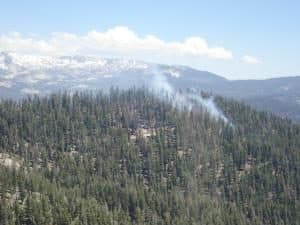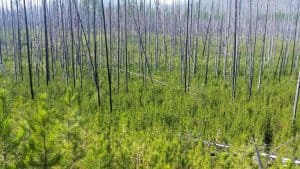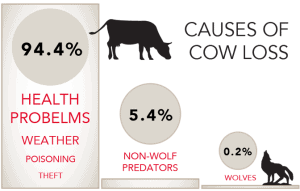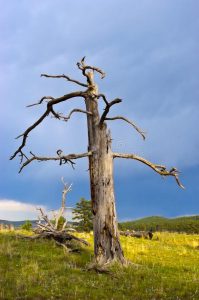The Forest Service and BLM violated NEPA when they issued leases for 13 parcels of land on the Santa Fe National Forest and failed to adequately consider their effects on greenhouse gas emissions and the effects of water use (D.N.M.)
- 2 Bar Ranch Limited Partnership v. USFS
(New case.) The ranch challenges a 20% suspension of season of use under its grazing permit on the Beaverhead-Deerlodge National Forest. (The complaint exceeded the size limits for this site. Oddly, I noted that the final appeal decision letter by the Forest Service reviewing officer stated “Your requested relief will be granted.”) (D. Mont.)
(New case.) Conservation Congress challenges the adjacent Lassen 15 and Joseph Creek projects on the Modoc National Forest. (E.D. Cal.)
(New case.) Environmental plaintiffs challenged a decision by the Office of Surface Mining Reclamation and Enforcement to allow the Kayenta Coal Mine to continue until 2020 on Navajo Nation Lands in northeastern Arizona. (D. Ariz.)
(New case.) Nine environmental groups are challenging the EPA and Corps of Engineers interpretation of the Clean Water Act requirements for identifying “waters of the United States” in their decisions to adopt regulations in 2015 and 2018. (N.D. Cal.)
(Viewing the opinion requires a Lexis account.) The circuit court held that the BLM did not have to supplement its programmatic environmental impact statement for the Federal Coal Management Program based on new climate change information because the Program was a completed federal action (however, they could challenge the sufficiency of the PEIS through challenges to specific leases and projects). (D. C. Cir.)
Blogger’s bonus
Recreation businesses sue Trump administration over mining near Boundary Waters Canoe Area I
“In 2016, then-chief of the U.S. Forest Service Thomas Tidwell wrote to the Bureau of Land Management, warning of “the inherent potential risk that development of a regionally-untested copper-nickel sulfide ore mine within the same watershed as the BWCAW might cause serious and irreparable harm to this unique, iconic, and irreplaceable wilderness area.””
“President Donald Trump endorsed mining in Superior National Forest in a visit to northern Minnesota on Wednesday, saying his administration is taking steps to roll back an Obama administration policy to protect hundreds of thousands of acres in the national forest from mining and other industry.”
“The lawsuit by the business owners against the U.S. Department of the Interior — filed the day after Trump’s visit — illustrates the increasingly well-organized opposition to the proposed Twin Metals project. Environmental groups are incensed that the proposal would mean ore processing less than a half mile from Birch Lake, which feeds directly into the Boundary Waters.”
USFS prevails in Lostine Corridor lawsuit
At least in the proceedings before the magistrate judge, who makes recommendations to the district court. This project is on the Wallowa-Whitman National Forest.
“The ruling stated the USFS followed federal law in the development of the Lostine River project designed to reduce the number of standing dead trees and forest density along the narrow corridor, improves egress and safety for visitors and firefighters, and provides a safe landing spot for helicopters employed for firefighting and search and rescue.”




